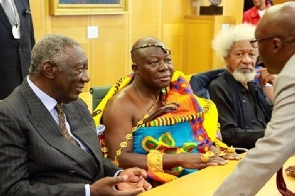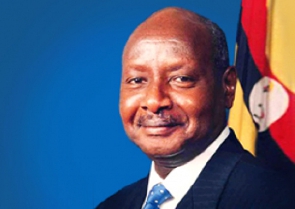Opinions of Monday, 23 July 2012
Columnist: Tigo, Joshua
In My Dreams: One for Korle Bu
There is an old Ghanaian proverb that says “even if you hate the Cheetah, make some time to admire its speed”. To wit, there is always something good in every situation however gad it may appear. So when I made my last visit to the Korle Bu Teaching Hospital (KBTH) last Monday as one of the reporters who were invited for the hospital’s mid-year performance review, questions ran through my mind. What is a hospital that has been in the news for all the wrong reasons in recent times reviewing? I was also wondering if it was not in the interest of the hospital’s management to do whatever evaluation or, as it were, review that they were doing outside the ever-fault-finding eyes of journalists like me.
Nevertheless, I was at the opening ceremony of the review and sat through three presentations including an address by the Chief Executive Officer of the KBTH, Professor Nii Ottu Nartey. In all, there were going to be 23 presentations from various directorates and departments of which I sat through only the first three. I listened to the presentations of the Directors of Administration, Human Resource and Medical Affairs. As I listened to them, I could not help but remind myself of the fact that “bad news sells”. Indeed, I could not fathom how in spite of the many things that had gone on in the hospital, it was in the news, at least for the period under review, for only the bad reasons.
If for nothing at all, I saw the move by the management of the hospital to conduct the mid-year review in the full glare of the media and other non-management members of staff of the hospital as one that needs to be applauded. What made my joy complete on the day was the fact that the process was not used to window-dress. One presenter after the other enumerated the challenges they faced, moves made to address the challenges and the way forward. It was refreshing to hear the Director of Human Resources, Mr T. A. Mammoud, for instance, say in his presentation that his outfit had identified a serious challenge with their Front Desk Executives (FDEs)’ relationships with the hospital’s clientele, a challenge he said his directorate had addressed by organising in-service training for all the FDEs.
He also noted with concern, for example, that the non-clinical to clinical staff ratio of the hospital stood at 3:1 based on the hospital’s pay roll, saying that was not good for the KBTH especially when its core mandate was to provide clinical services. Mr Mammoud however added that going forward, there was going to be a conscious human resource policy to correct the imbalance while allaying the fears of the non-clinical staff that there would be nothing like retrenchment to correct the anomaly. These examples are but just a few of the many revealing things that appeared in the three presentations that I sat through. Security was also identified as one of the challenges of the hospital therefore, by way of policy, the Directorate of Administration said they were going to embark on the provision of tags and stickers to taxis and other vehicles that operated in the hospital a pre-requisite for their operations and entry.
Why do I think the KBTH deserves commendations then? As a reporter I have seen many people shy away from telling the other (negative) side of their organisations’ stories for whatever reasons. I remember very well, how some two elderly men were at each other’s throats for some information that one of them had given me. In the views of the peeved one, the information his colleague gave me was indicted their department and needed not to be given to a journalist. This experience, I believe, is one that reporters go through every day and has therefore bothered on the very existence PR in these organisations. Bringing up the question of whether those institutions really understand the practice in which they find themselves.
The man Ivy Ledbetter Lee, credited in history as the father of PR led the way when he worked with the Pennsylvania Railroad. While working there in October 28, 1906, a tragic train accident happened in which fifty passengers were killed. Ivy Lee convinced the railroad company to release what could be considered as the first press release to journalists, before any rumours were spread and reported on. He created a public statement about the accident, and presented it to journalists at the location of the incident.
Ivy’s action, a classic case study in public relations practice and study, was meant to deal with rumours and speculation that may have arisen out of the accident and to present an accurate and true picture of the happenings from an official point of view.
I saw the KBTH’s action of last Monday as a replication of Ivy Lee’s handling of the Pennsylvania Railroad Train Accident and, of cause, an action worth emulating by other organisations including governmental outfits. Many were the times when organisations have complained of misrepresentation and speculation on the part of journalists. Fact is, in the absence of information, the journalist is at liberty to speculate and nothing stops us from doing so.
The case of the KBTH drew my attention and admiration because of the bad publicity that the hospital has had in the recent past. Those turbulent times that the Public Relations Officer of the hospital, Mr Mustapha Salifu described to me in one of our conversations as “difficult times for PR”, I am sure will be a thing of the past with more of the openness. Prof Nartey, the CEO of KBTH himself told me in an interview that “Korle Bu belongs to all of us and there is no need to hide anything that goes on here from the public”.
“The media and for that matter, the public needs to understand the workings of Korle Bu and the challenges of the hospital so that they can help support us in our strife to fulfil our quest of ensuring value-for-money and optimal satisfaction of patients and other stakeholders,” Prof Nartey said.
Telling an accurate story is important but giving out the accurate information is, as well, very important. You cannot, as it were, eat your cake and have it; likewise you cannot seek to hide your part of the information and expect it to be told accurately. That is all that there is about proactive PR, the one displayed by the KBTH last Monday.
If only PR practitioners will not only be proactive with the good news and would do so even with the bad news as was demonstrated by Ivy Lee in 1906 and, by the KBTH last Monday, their jobs will be made less stressful. In any case, if the bad news is not your own creation, why try to cover it up. PR practice is not supposed to be a wrong-covering practice; it is just another avenue to put out accurate information however good or bad they (the news) may be.
Korle Bu can take itself off the radar of bad publicity with more of what it did last Monday so can other practitioners wean themselves of unnecessary heat in the spare of the moment by being proactive and not reactive in their practice.
Well done the KBTH!
“In My Dreams” is weekly column that appears in The Finder Newspaper every Thursday.
Joshua.tigo@gmail.com












